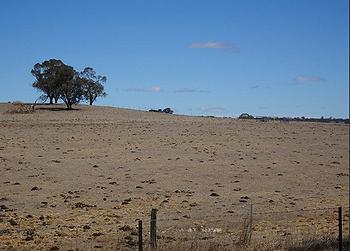
GENEVA, Switzerland, November 26, 2019 (ENS) – Levels of heat-trapping greenhouse gases in the atmosphere have reached another new record high, according to the World Meteorological Organization, WMO. This continuing long-term trend means that future generations will be confronted with increasingly severe impacts of climate change, including rising temperatures, extreme weather, water scarcity, sea-level rise and disruption to marine and land ecosystems.

The report of record levels of greenhouse gases comes on the eve of a year in which nations are due to strengthen their Paris Agreement climate pledges.
But a new UN Environment Programme, UNEP, report, the 2019 Emissions Gap Report, warns that unless global greenhouse gas emissions fall by 7.6 percent each year between 2020 and 2030, the world will miss the fleeting opportunity to get on track towards the 1.5°C temperature goal of the Paris Agreement.
UNEP’s 2019 Emissions Gap Report says that even if all current unconditional commitments under the Paris Agreement are implemented, temperatures are expected to rise by 3.2°C, bringing even wider-ranging and more destructive climate impacts.
Collective ambition must increase more than fivefold over current levels to deliver the cuts needed over the next decade for the 1.5°C Paris goal.
The news comes just before the 10-day annual United Nations climate summit known as COP25 opens in Madrid, Spain on December 2.
Publications released Tuesday by UN Climate Change, UNFCCC, shine a light on current climate action and lay down pathways to climate neutrality by mid-century, required to meet the temperature goals of the Paris Agreement.
The Yearbook of Global Climate Action 2019 takes stock, highlighting climate action success stories and the need for conditions conducive to stepped-up climate action, while the Climate Action Pathways suggest transformational actions and milestones towards neutrality in key areas, such as energy, industry, transport, human settlements, water, land use, and resilience to the inevitable effects of climate change.
The documents were developed in a collaborative effort with the coalitions and initiatives of the Marrakech Partnership for Global Climate Action, under the leadership of the High-Level Champions.
“The bottom line is that active participation by all of us—governments, businesses, investors, regions and more—is needed if we are to overcome the climate emergency we currently face,” said UN Climate Change Executive Secretary Patricia Espinosa.
The documents will be presented during an event at COP25 on Wednesday, December 4 and integrated throughout the events of the Marrakech Partnership in Madrid, the full program of which has also been released today.
“The goals are set, the science is clear, tools are there, and needed actions are defined—let’s all work together in a holistic and integrated manner to make the required changes happen,” said the High-Level Champions.

Complementing the Yearbook and Pathways documents, there is another key knowledge product available for policymakers and the public, the Global Climate Action Portal (NAZCA), which records and recognizes climate action from a diverse range of stakeholders.
Together, they show climate action and how climate action can be undertaken to keep the global temperature rise below 1.5 degrees Celsius and increase resilience to the impacts of climate change.
“Our choices matter. Climate-thoughtful choices add up to meaningful levels of ambition, especially when markets and policymakers recognize these actions and reflect them in products, policy, and programs,” said Espinosa.
The year 2020 will be a critical year for climate action, with the UN climate change conference, COP26, in Glasgow, Scotland aiming to determine the future course of efforts to avert a crisis, and countries expected to step up their climate commitments.
“For 10 years, the Emissions Gap Report has been sounding the alarm – and for 10 years, the world has only increased its emissions,” said UN Secretary-General António Guterres. “There has never been a more important time to listen to the science. Failure to heed these warnings and take drastic action to reverse emissions means we will continue to witness deadly and catastrophic heatwaves, storms and pollution.”
The WMO Greenhouse Gas Bulletin showed that globally averaged concentrations of carbon dioxide (CO2) reached 407.8 parts per million in 2018, up from 405.5 parts per million (ppm) in 2017. Carbon dioxide remains in the atmosphere for centuries and in the oceans for even longer.
The increase in CO2 from 2017 to 2018 was very close to that observed from 2016 to 2017 and just above the average over the last decade.
Global levels of CO2 crossed the symbolic and significant 400 parts per million benchmark in 2015.
Concentrations of methane and nitrous oxide also surged by higher amounts than during the past decade, according to observations from the Global Atmosphere Watch network which includes stations in the remote Arctic, mountain areas and tropical islands.
“There is no sign of a slowdown, let alone a decline, in greenhouse gases concentration in the atmosphere despite all the commitments under the Paris Agreement on Climate Change,» said WMO Secretary-General Petteri Taalas.
“We need to translate the commitments into action and increase the level of ambition for the sake of the future welfare of mankind,” he said.
“It is worth recalling that the last time the Earth experienced a comparable concentration of CO2 was 3-5 million years ago. Back then, the temperature was 2-3°C warmer, sea level was 10-20 meters higher than now,” said Taalas.
Since 1990, there has been a 43 percent increase in the warming effect on the climate by long-lived greenhouse gases. CO2 accounts for about 80 percent of this, according to figures from the U.S. National Oceanic and Atmospheric Administration quoted in the WMO Bulletin.
The WMO Bulletin includes a focus on how isotopes confirm the dominant role of fossil fuel combustion in the increase of atmospheric carbon dioxide.
Copyright Environment News Service (ENS) 2019. All rights reserved.
© 2019, Environment News Service. All rights reserved. Content may be quoted only with proper attribution and a direct link to the original article. Full reproduction is prohibited.
